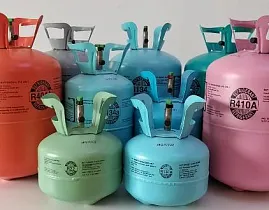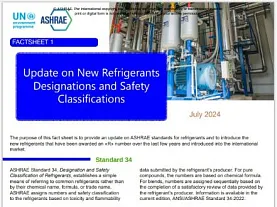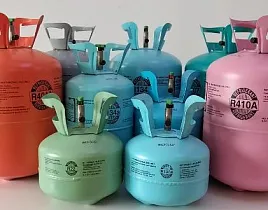Various new refrigerant types have been developed by the chemical industry to offer alternative solutions to hydrocarbons while some high-GWP refrigerants are to be phased out due to global regulations.
R513A and R452A are refrigerants which are designed to work as “drop-in” or replacement refrigerants for R134a and R404A.
Secop ran development projects to verify that existing compressor types are compatible with these new refrigerants. As a result, most of Secop R134a compressors have now been additionally released for R513A and most R404A compressors have been released for R452A (all including approvals by the relevant authorities).
Using the new refrigerant mixtures results in slightly different cooling performance compared to the original refrigerant. This deviation is not similar for all operation conditions, and it is not the same for all different compressor platforms. To visualize these deviations, separate performance tables for both refrigerants are shown in the new compressor datasheets.
Besides cooling performance, some important temperatures inside the compressor are affected when the new refrigerant is used. Depending on operation conditions and compressor design, slight temperature changes in the motor and pumping unit were observed when checking both refrigerants on the same compressor. In very few cases, the operation limits had to be re-defined for the new refrigerants to avoid risk of protector cut offs in extreme heavy conditions. Operation limits are also shown for both refrigerants
separately in the new compressor datasheets.
Changes of starting equipment or other accessories are not needed. All equipment is compatible with both refrigerants.
Secop has run experiments with changing refrigerant inside a commercial cooling appliance from an old to “new” refrigerant. We have summarized the general results below:
Use as a pure drop-in
Fill in equal mass of other refrigerant R134a > R513A or R404A > R452A no other changes
New setup works with moderate results:
• cooling performance is lower
• energy consumption is higher
• operating pressures are higher > risk of early safety cut off
Use as drop in + optimization of refrigerant charge amount and capillary tube
New setup works as good as with the reference refrigerant:
• cooling performance at previous level
• energy consumption at previous level
• operating pressures at previous level > unchanged overload behavior of cooling system
Refrigerant change in appliances with need for accurate temperature regulation
No significant impact on R134a > R513A conversion.
Compared to R404A, a relevant temperature glide occurs with the use of R452A. As a consequence, lower energy efficiency and slightly lower cooling capacity are to be expected even after optimization.
When changing from R134a to R513A or from R404A to R452A in commercial appliances, technical adaptions are needed to keep the cooling performance at the previous level and to avoid safety cut-off inside typical operation range.
Always optimize charging amount and capillary tube size for new refrigerant.







